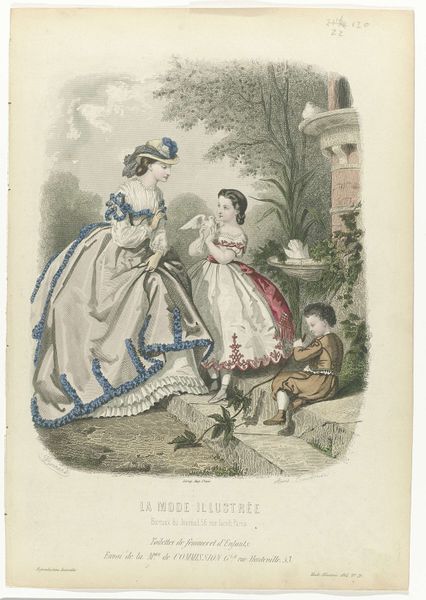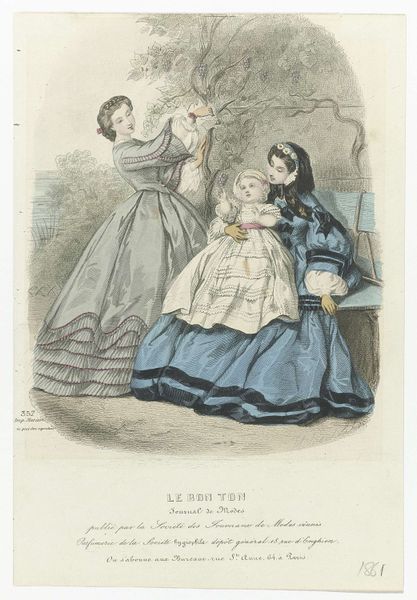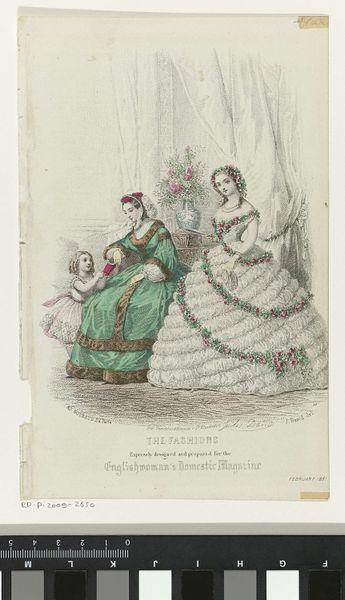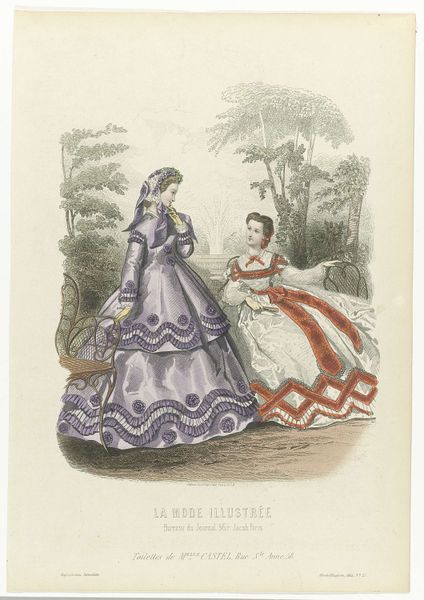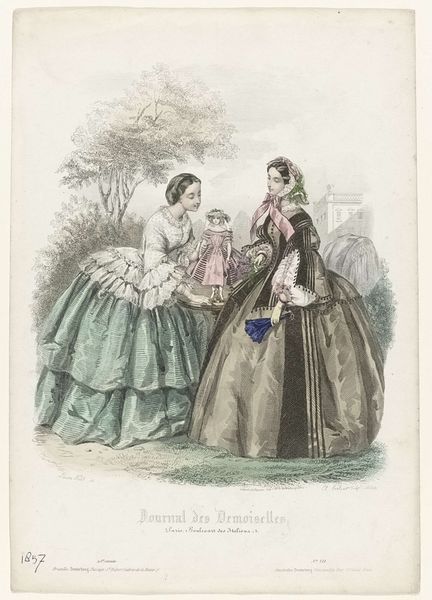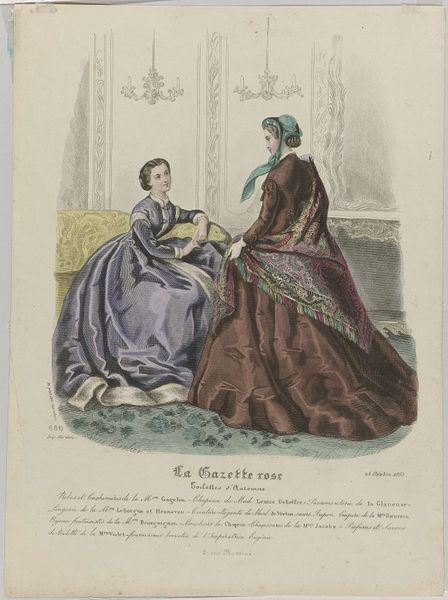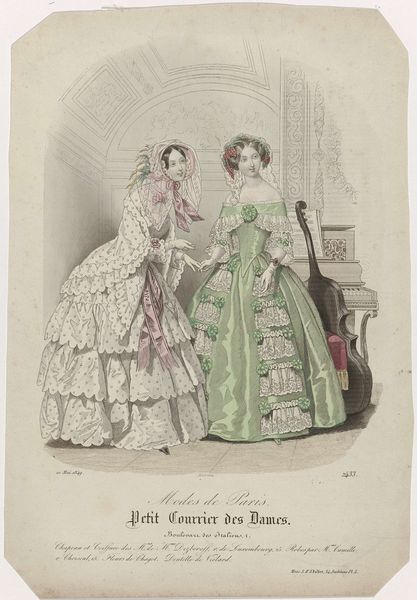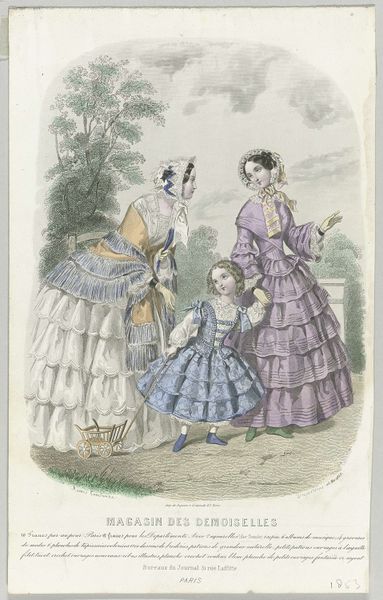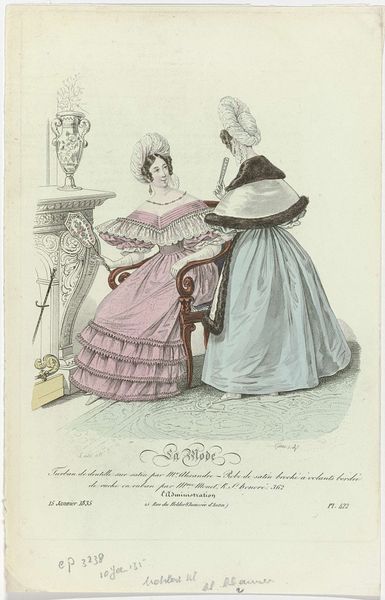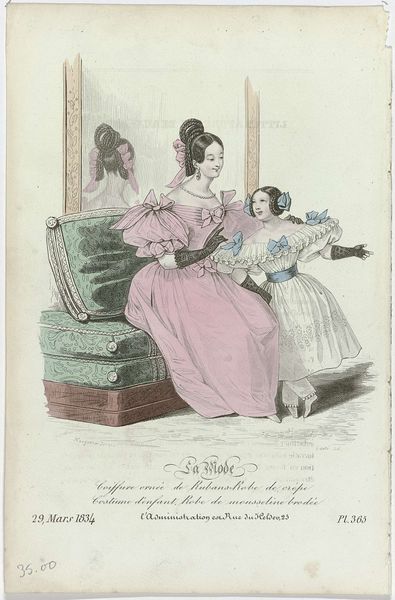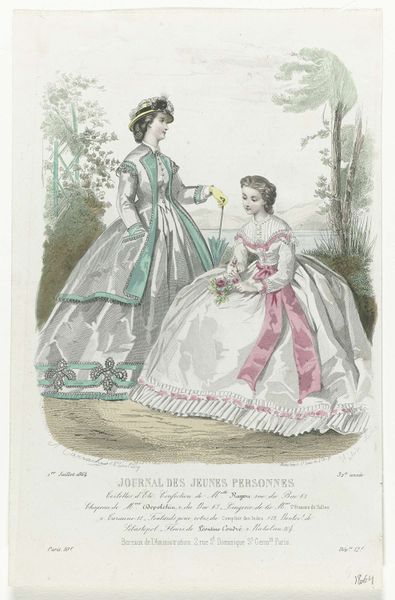
Dimensions: height 295 mm, width 217 mm
Copyright: Rijks Museum: Open Domain
Curator: Oh, isn't that lovely? It feels like stepping into a forgotten garden party. The print—"La Gazette Rose, 16 Juin 1862, No. 417: Toilettes de Château (...)" by Louis Berlier— just sings of a certain Belle Époque charm, doesn't it? The light pastel colours and elaborate dresses have a dreamy quality to them. Editor: Yes, there's an immediate visual appeal, definitely! But beyond the surface, this image functions as more than a decorative piece. As a print from "La Gazette Rose," it was, fundamentally, an advertisement. It presented very specific and curated ideas of femininity and luxury. Curator: Absolutely, and isn't that the point, in a way? Art as aspiration. It is gorgeous… the woman in the center looks like she might be about to share the secret to the universe. Those layers of frills on the other woman's gown look so deliciously impractical. Editor: "Impractical" is definitely a key term here. We have to acknowledge how such publications, even when ostensibly presenting 'fashion,' also served as markers of social stratification. They helped enforce codes around gender, class, and status within Second Empire France. This wasn't just about beautiful dresses; it was about power. The dress of the nobility reflected their position, which was becoming ever less secure and was about to face many social revolutions that forever ended feudal social stratifications. Curator: True. It also feels rather subversive at the same time...The artist offers these delicate prints, but are we invited into an exclusive circle, or are we, perhaps, granted a brief peek from behind the curtain? It has an emotional appeal and a socio-historical value. Editor: A peek behind the curtain, yes, perhaps even one that questions the material itself. These weren't hand-painted masterpieces available only to the elites. Prints allowed for much wider distribution of these ideas of the exclusive and ideal feminine, broadening and democratising conversations about aesthetics, art and luxury at the time. But how far beyond elite circles, and what does that mean about what access some people might have been offered while simultaneously others were still further ostracised? Curator: Indeed, still more questions remain. Now I’m inspired to dive deeper into Louis Berlier! Thank you, I learned a lot today. Editor: My pleasure, and just consider, this print served as a very calculated snapshot of 1862 France that it is beneficial for us to unpack, so that it doesn't trap us in a static vision.
Comments
No comments
Be the first to comment and join the conversation on the ultimate creative platform.
